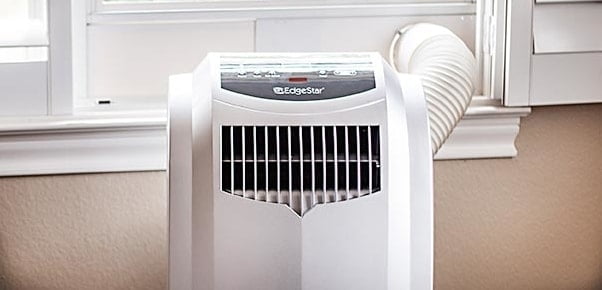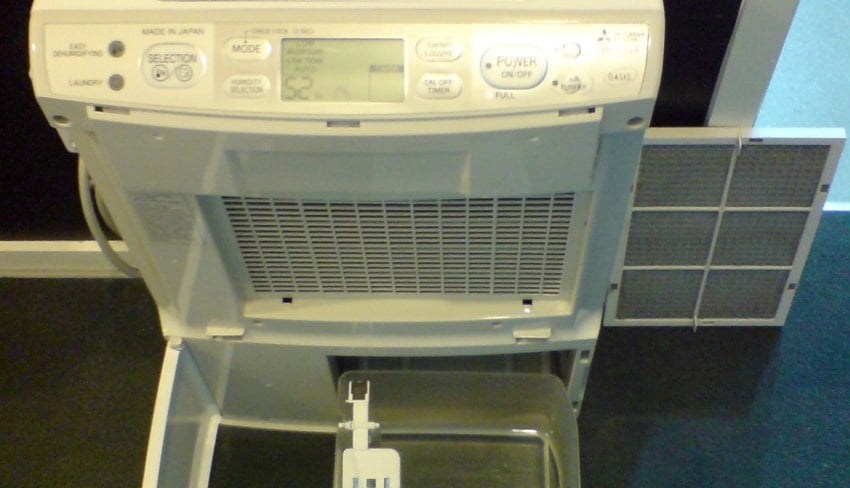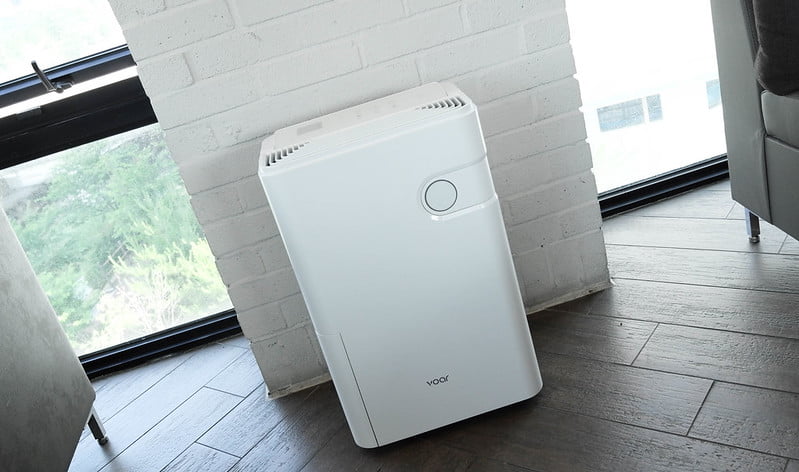Last Updated on July 3, 2022

We mostly use portable air conditioners to achieve more mobility and flexibility in air conditioning. One great feature in portable AC is dry or dehumidifier mode. Despite increased flexibility portable AC still need to be vented. But do you need to vent your portable AC in dehumidifier mode?
You do not necessarily need to vent your portable AC in dehumidifier mode. Not venting will make your room warmer but not affect dehumidification. However, venting is mandatory if you have a portable AC with self-evaporating technology otherwise humidity will be expelled in the same room via exhaust.
The goal of venting is to remove heat from inside the room. If you don’t want your portable AC to cool targeted space and just want dehumidification, there is no problem in not venting.
But there are ways that different portable ACs use to make cooling operation more efficient. So it is a good idea to be aware of the working of your portable AC and what kind of modifications you can make in it.
How A Portable AC Removes Humidity From Air?
Your portable AC uses vapor compression cycle to cool the refrigerant inside it. Refrigerant is cooled after going through the processes of compression, condensation, expansion and evaporation.
The primary function of the air conditioner is to cool the isolated space in which it is operated. Extracting humidity from air is a secondary function that happens by process of condensation.
During its working heat is expelled outside through hot condenser coils. Cool air enters the room after passing through cool evaporator coils by assistance of a fan.
When the evaporator coils are cold enough then the water vapors inside air passing over it condense. In fact temperature of the air has to be below certain value for condensation to occur. That temperature is called dew point.
The cooler the evaporator coils the more is the rate of dehumidification of the air. Water generated as a result of condensation is called condensate. This condensate is collected in your portable AC in a container called condensate pan.
What Happens in Dehumidifier (Dry) Mode of Your Portable AC?
Some portable air conditioners are provided with ‘Dry Mode’. When you are operating your portable AC on dry mode the principle for removing humidity is exactly the same as used in cool mode.
However dry mode is more efficient. The reason is that your portable AC adjusts the fan and compressor speed to make dehumidification its priority. Fan runs at a low speed and compressors operating time is constantly adjusted according to the humidity detected by sensor. This makes dehumidification more effective and efficient.
Fan operates at a lower speed in dehumidifier mode so that evaporator coils are cold enough to extract humidity from the environment. If the coil temperature is higher than a specific value the air will never reach saturation temperature and dehumidification will not occur.
The amount of humidity removed by your portable AC depends upon the temperature below dew point (the point below which dehumidification occurs).
That is why it is highly recommended that you buy a portable AC that is accurate according to the measurement of the room (especially not larger when you need dehumidification).
Do You Need to Vent Your Portable AC in Dehumidifier Mode?
Portable air conditioners are more flexible, mobile and convenient compared to other type of air conditioners. But they are less efficient option. The main reason we usually choose portable AC over other air conditioning options is due to certain limiting conditions.
It may be due to no window accessibility, neighborhood restriction or having the need of mobility. For dehumidification, it would add to mobility of portable AC immensely if we don’t have to vent it.
It is OK to Vent in The Same Room For Dehumidification
Portable ACs use energy to reject heat outside continuously through vent hose. When you do not vent your portable AC, hot air is expelled in the same room.
However, this will not affect dehumidification process performed by your portable AC. You portable AC will still condense water vapors from the environment and expel them to the condensate pan.
This is due to the fact that the air used to absorb heat from condenser coils and reject it through vent hose is different. In other words, ultimately air from the room is used but route of air flow through condenser (hot coils) and evaporator (cool coils) is dissimilar. They follow separate paths.
Some Side Effects When Not Venting
Though dehumidification will occur, there will some side effect when not venting.
Hot air is expelled in the same room in which cool air is delivered. Theoretically the cooling effect will be completely balanced by heating effect and there will be no change in room temperature. Basically, no cooling.
However, practically we will have to take into account inefficiencies in a portable AC. So in actuality temperature of your room will increase and it will get warmer.
You will have to know the conditions in which you are using this configuration of portable AC. If you want your room to cool with dehumidification then definitely don’t use your portable AC this way. However, if the goal is to extract humidity from a room that is seldom used like basement or attic, this might actually be a good idea.
You can also use it in your living room when conditions seem okay for use. Like on a rainy day in winters when you are not affected by somewhat warm room.
Be Careful About the Kind of Portable AC You Have
In general, all portable ACs use a common air conditioning cycle. However, there are several kinds of units available in the market. They may use additional techniques to increase the efficiency of cooling and make the operation more convenient for you.
What you should be concern about is the method that your portable AC use to expel condensate water. In the most basic type condensate pan has to be manually removed after it is filled. After this portable AC will stop the air conditioning process.
However, some units have self-evaporating technology. What they do is that they automatically expel condensate through exhaust or vent hose. So you have to rarely or never empty your condensate pan.
There are types of portable air conditioners that use this method for water expulsion i.e. partially and fully evaporating. In partially evaporating portable AC you will have to seldom remove the water while in fully evaporating portable AC all of the condensate is exhausted.
The problem that occurs when you don’t vent a partially or fully evaporative portable AC is rejection of humidity in the same room you are running your portable AC.
Thereby the water vapors that were condensed from the air after interaction with the evaporator coils are exhausted through the vent hose in the very room you are trying to dehumidify. So in self-evaporative portable AC not venting will give you no cooling and negligible or no dehumidification depending upon the rate at which water vapors are expelled.
Wrapping up…
In short, you should identify the type of portable AC you have. If you have a portable AC that requires manually emptying of water from condensate pan, you may not vent in dry mode (for dehumidification only).
But if you have a portable AC that automatically exhausts condensate through vent hose, you are getting nothing at the expense of a lot of energy wastage.


